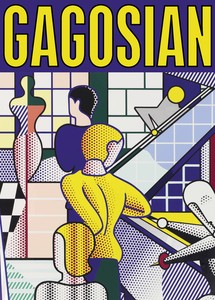
Now available
Gagosian Quarterly Summer 2024
The Summer 2024 issue of Gagosian Quarterly is now available, featuring a detail of Roy Lichtenstein’s Bauhaus Stairway Mural (1989) on the cover.
Pop Art is: Popular (designed for a mass audience), Transient (short term solution), Expendable (easily-forgotten), Low cost, Mass produced, Young, Witty, Sexy, Gimmicky, Glamorous, Big Business. . .
This is just the beginning. . .
—Richard Hamilton, 1957
Gagosian is pleased to present a major exhibition to mark the fiftieth anniversary of Richard Hamilton’s visionary definition of Pop art. Hamilton’s seminal role in this movement has been widely acknowledged, and this exhibition includes artists of his generation as well as many others who have contributed to the development and dissemination of Pop over the last fifty years.
Pop art crossed all boundaries between high and low culture to produce many of the twentieth century’s iconic images. Artists around the world radically transformed painting and sculpture, according the same importance to the everyday and the mass-produced that had previously been the reserve of the epic and the unique. Andy Warhol’s vision of the role of art in modern society and the democratization of art production were set in motion as artists took images from advertising, Hollywood, comic books, and industrially designed products to address issues such as class, political change, and consumer culture. Whether they borrowed in a celebratory or critical spirit, Pop artists encouraged a new contemporary sensibility through their fresh perception of visual, cultural, and commercial icons. Pop represented a sudden and dramatic expansion of often-contradictory possibilities, which has been one of the main reasons for its continued influence on subsequent generations of artists.
This exhibition allows us to consider the ways in which artists, past and present, respond to constantly changing ideas about what Pop art is. It presents the rise of Pop art, and its establishment as a major force in contemporary art, through works by more than forty artists, from the first generation of Pop artists—including Hamilton, Jasper Johns, Yayoi Kusama, Roy Lichtenstein, Claes Oldenburg, Robert Rauschenberg, Ed Ruscha, and Warhol—to subsequent generations of artists who have traced and extended Pop art’s varied legacies, including Rachel Harrison, Damien Hirst, Mike Kelley, Jeff Koons, Nate Lowman, Takashi Murakami, Richard Prince, and others. In this highly engaging artistic dialogue, methods of seriality and repetition, the use of synthetic materials as well as media images, and references to mass production are visible proof that the concept of Pop is still vital in contemporary art.

The Summer 2024 issue of Gagosian Quarterly is now available, featuring a detail of Roy Lichtenstein’s Bauhaus Stairway Mural (1989) on the cover.
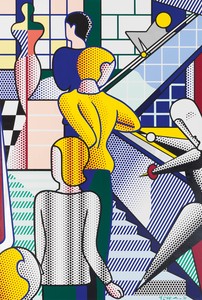
Alice Godwin and Alison McDonald explore the history of Roy Lichtenstein’s mural of 1989, contextualizing the work among the artist’s other mural projects and reaching back to its inspiration: the Bauhaus Stairway painting of 1932 by the German artist Oskar Schlemmer.
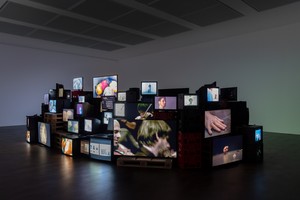
On the occasion of Douglas Gordon: All I need is a little bit of everything, an exhibition in London, curator Adam Szymczyk recounts his experiences with Gordon’s work across nearly three decades, noting the continuities and evolutions.
In conjunction with Franz West: Papier, the gallery’s presentation of paper-based works by Franz West at Frieze Masters 2023, artist Oscar Murillo and arts writer, critic, and broadcaster Ben Luke sit down to discuss Murillo’s collaboration in selecting the works on view, as well as his personal experiences meeting the late artist in London.
In celebration of the centenary of Roy Lichtenstein’s birth, Irving Blum and Dorothy Lichtenstein sat down to discuss the artist’s life and legacy, and the exhibition Lichtenstein Remembered curated by Blum at Gagosian, New York.
Douglas Gordon took over the Piccadilly Lights advertising screen in London’s Piccadilly Circus, as well as a global network of screens in cities including Berlin, Melbourne, Milan, New York, and Seoul, nightly for three minutes at 20:22 (8:22pm) throughout December 2022, with his new film, if when why what (2018–22). The project was presented by the Cultural Institute of Radical Contemporary Art (CIRCA) in conjunction with the exhibition Douglas Gordon: Neon Ark at Gagosian, Davies Street, London.
Gagosian and the Art Students League of New York hosted a conversation on Roy Lichtenstein with Daniel Belasco, executive director of the Al Held Foundation, and Scott Rothkopf, senior deputy director and chief curator of the Whitney Museum of American Art, New York. Organized in celebration of the centenary of the artist’s birth and moderated by Alison McDonald, chief creative officer at Gagosian, the discussion highlights multiple perspectives on Lichtenstein’s decades-long career, during which he helped originate the Pop art movement. The talk coincides with Lichtenstein Remembered, curated by Irving Blum and on view at Gagosian, New York, through October 21.
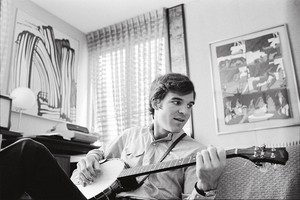
Actor and art collector Steve Martin reflects on the friendship and professional partnership between Roy Lichtenstein and art dealer Irving Blum.
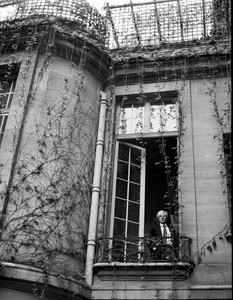
Andy Warhol’s Insiders at the Gagosian Shop in London’s historic Burlington Arcade is a group exhibition and shop takeover that feature works by Warhol and portraits of the artist by friends and collaborators including photographers Ronnie Cutrone, Michael Halsband, Christopher Makos, and Billy Name. To celebrate the occasion, Makos met with Gagosian director Jessica Beck to speak about his friendship with Warhol and the joy of the unexpected.
In this video, Jessica Beck, director at Gagosian, Beverly Hills, sits down to discuss the three early paintings by Andy Warhol from 1963 featured in the exhibition Andy Warhol: Silver Screen, at Gagosian in Paris.
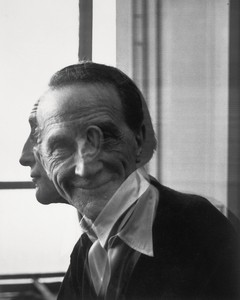
Harry Thorne reflects on Brian O’Doherty’s recording of Marcel Duchamp’s heart.
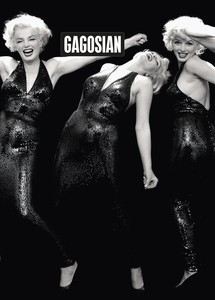
The Summer 2023 issue of Gagosian Quarterly is now available, featuring Richard Avedon’s Marilyn Monroe, actor, New York, May 6, 1957 on its cover.
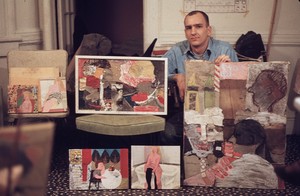
Susan Davidson, editor of the forthcoming monograph on the Great American Nudes, a series of works by Tom Wesselmann, explores the artist’s early experiments with collage, tracing their development from humble beginnings to the iconic series of paintings.
On the occasion of the exhibition Tom Wesselmann: Intimate Spaces at Gagosian, Beverly Hills, Susan Davidson sat down with Jeffrey Sturges to discuss the artist’s key works in his Great American Nudes (1961–73) and subsequent series.

The Spring 2023 issue of Gagosian Quarterly is now available, featuring Roe Ethridge’s Two Kittens with Yarn Ball (2017–22) on its cover.
In conjunction with his exhibitions Adam McEwen at Gagosian in London, and Adam McEwen: XXIII at Gagosian in Rome, the artist sits down with author Ian Penman to discuss his new obituary works and graphite sculptures.

In this interview, curator and artist K.O. Nnamdie speaks with artist Dan Colen about his recent show in New York: Lover, Lover, Lover. Colen delves into the concept of “home” as it relates to his work, specifically the Mother and Woodworker series. Thinking through the political and historical implications of “homeland” in the context of the artist’s relationship with Israel and America, the two consider the intersections between these paintings—the final group of his Disney-inspired canvases—and Colen’s work with Sky High Farm, New York.
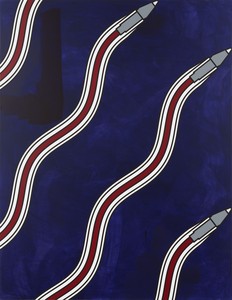
Contemporary artists Adam McEwen and Jeremy Deller met up online over the holiday season to discuss McEwen’s upcoming exhibitions in London and Rome. McEwen delves into the motivations and criteria behind his work, as well as the challenges and complexities of memorializing the living.
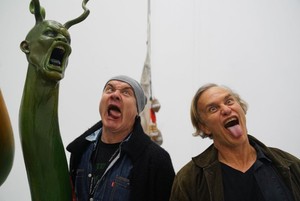
In conversation with James Fox, Damien Hirst reflects on the artwork of his longtime friend.
In this video, Deana Haggag, program officer, Arts and Culture at Mellon Foundation; Dan Colen, artist and founder of Sky High Farm; Linda Goode Bryant, artist and founder of Project EATS; and Diya Vij, curator at Creative Time sit down together to explore the roles of artist and audience, place and accessibility, legacy, capital influence, and individual vs. collective agency as they relate to artmaking today.